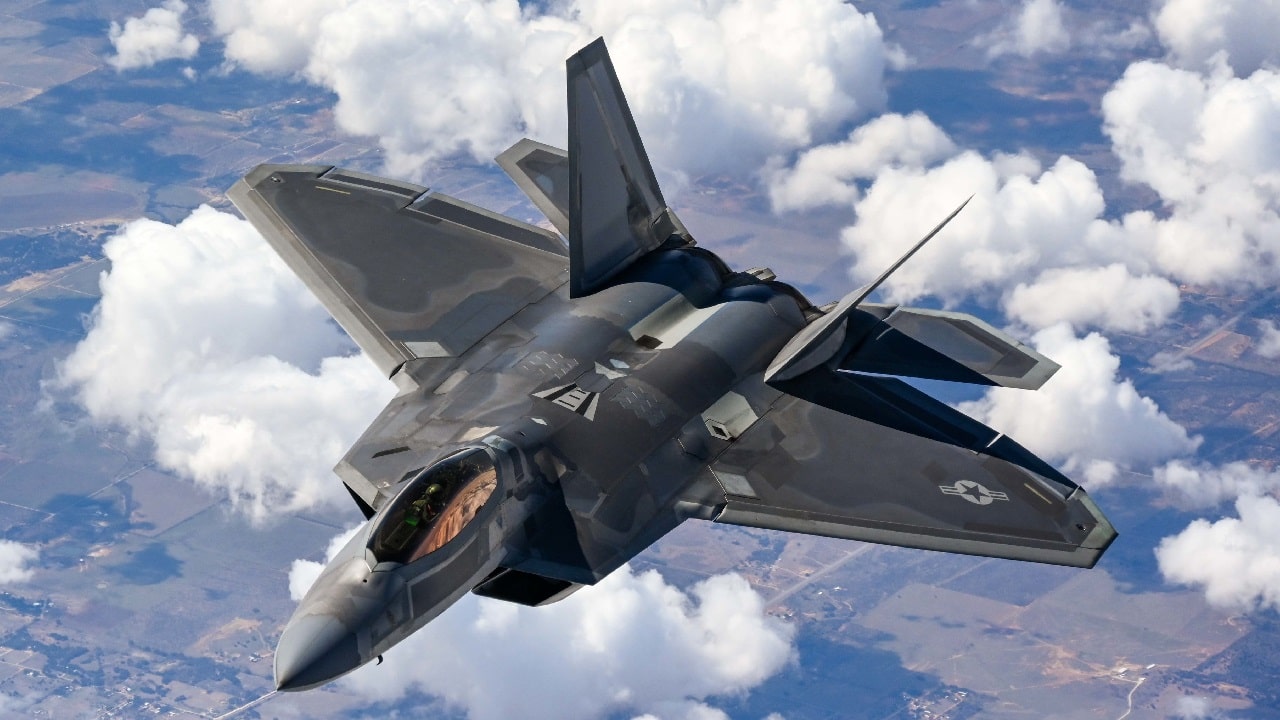The F-22 Raptor is one amazing fighter plane and with only 187 ever built, the U.S. Air Force can only wish it had more of them – and the photos prove it. However, what does China think about this fighter? Here is an amazing photo essay on the F-22 along with what China claims it can do against the Raptor:
The Lockheed Martin F-22 Raptor is respected for its dogfighting ability as much as its air-to-air maneuverability attributes, especially when compared with any other potential rival. Solely operated by the United States Air Force, the Raptor was developed as part of the service’s Advanced Tactical Fighter (ATF) program two decades ago. The aircraft was developed as an air superiority fighter that could also be capable of ground attack, electronic warfare, and signals intelligence.
Powered by two Pratt & Whitney turbofan engines, it is capable of reaching speeds of Mach 2 (1,534 mph/2,469 kph). The F-22 has a ceiling of 50,000 feet (15 kilometers) and a range of 1,841 miles (2,962 km) without refueling.
While speedy, the F-22 can’t outrun a hypersonic missile of course – and there are now reports that China could be considering how to employ such technology to target America’s best combat aircraft. Last December, a Chinese scientist even made a bold (even dubious) claim that a “ground-to-air hypersonic missile could catch up and destroy an F-22 (Raptor) in seconds if it fired a missile or dropped a bomb from short range.”
Such missiles, equipped with “heat-seeking” capabilities, could home in on “practically any target with remarkable accuracy and speed.” Targets could include stealth aircraft, ships and even moving vehicles on the street, researchers claimed. While most military ground vehicles move at speeds no greater than 60 mph, and ships slowly trudge across the open water – both on what is essentially a flat plane for the most part – military aircraft are far faster and more importantly, maneuverable.
Seeking Heat
Chinese media also highlighted the fact that U.S. Air Force data showed that heat-seeking missiles accounted for 90 percent of all aircraft lost in the 1980s, yet, failed to address the fact that it was the United States that scored the lion’s share of those kills. All heat-seeking missiles can easily target an aircraft by pursuing the heat signature. Heat-seeking, also called infrared homing, is a passive missile guiding technique – where it detects and locks on to the target from the emitting electromagnetic radiation in the infrared section of the spectrum.

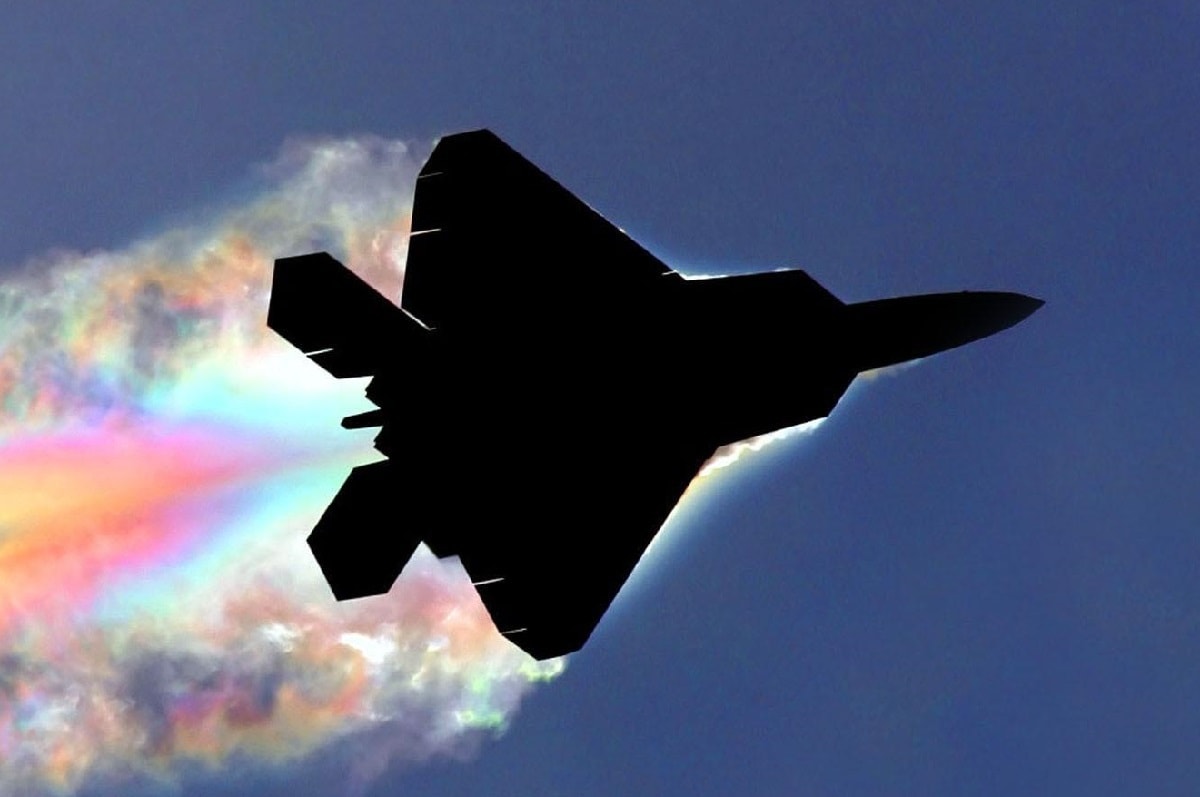
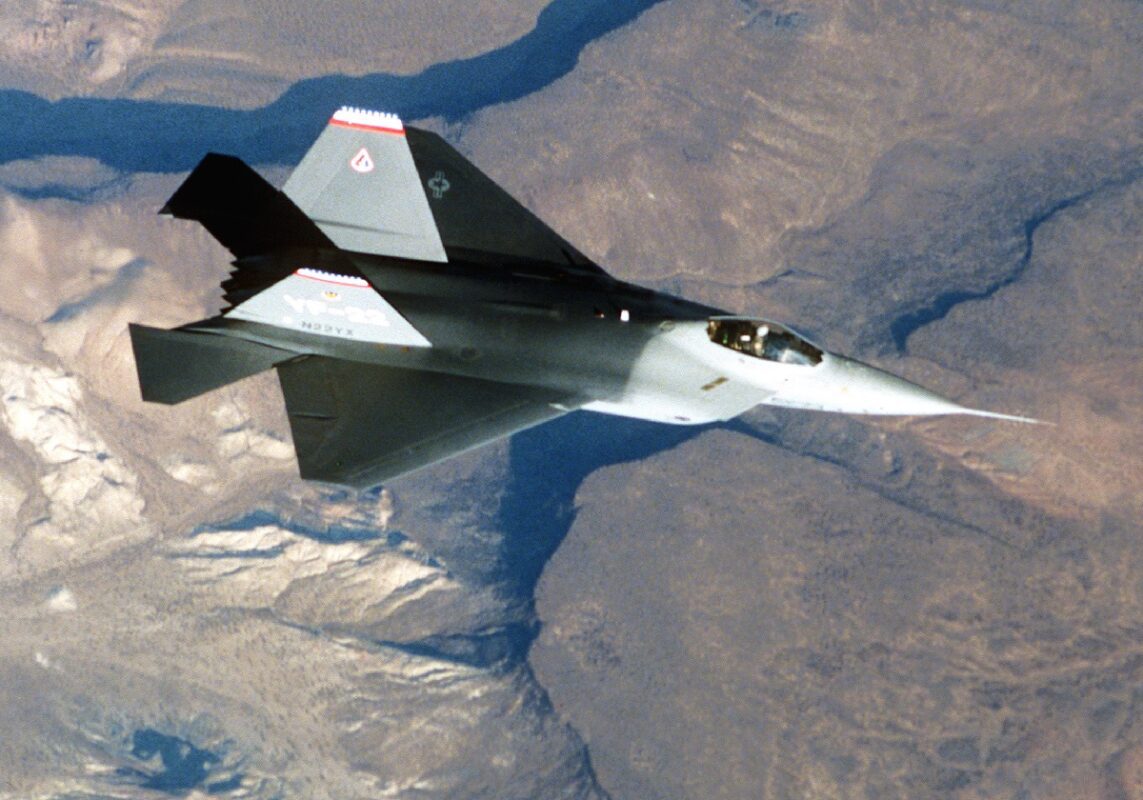
An air-to-air overhead view of the YF-22 advanced tactical fighter aircraft during a test flight. This was the precursor to the F-22.
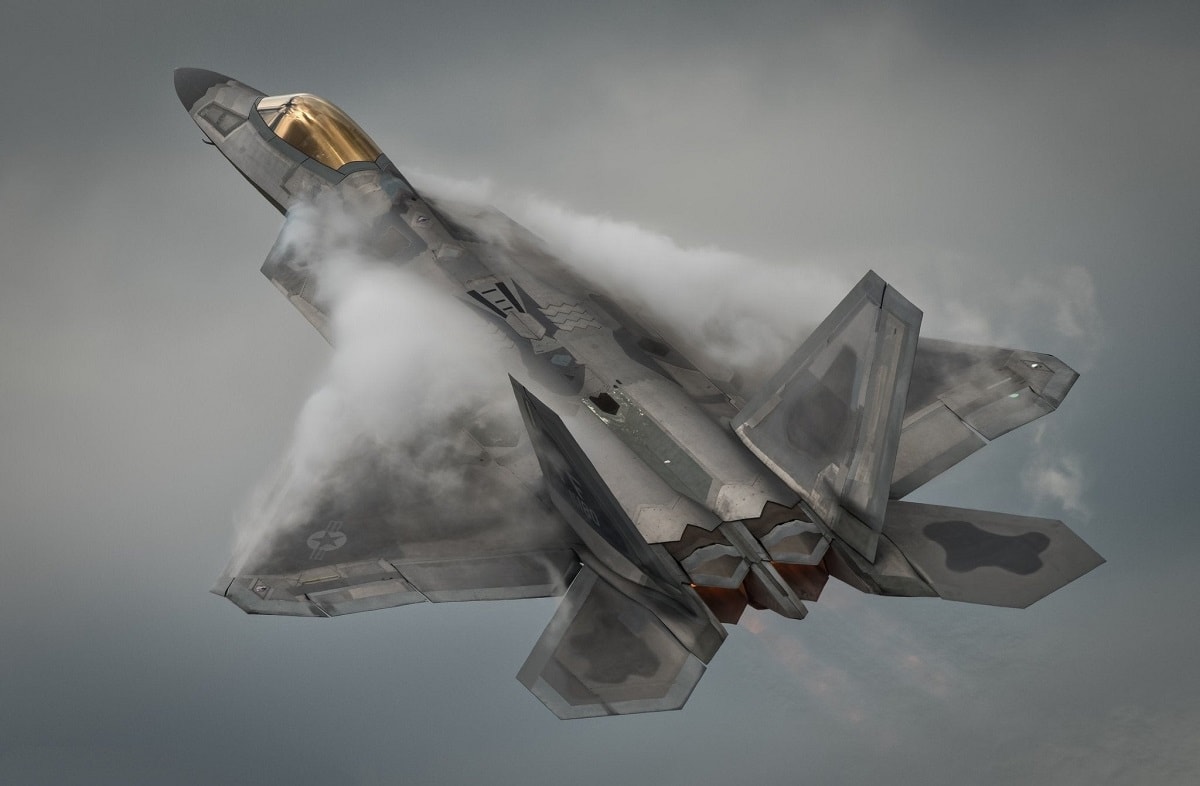
F-22. Image Credit: Creative Commons.
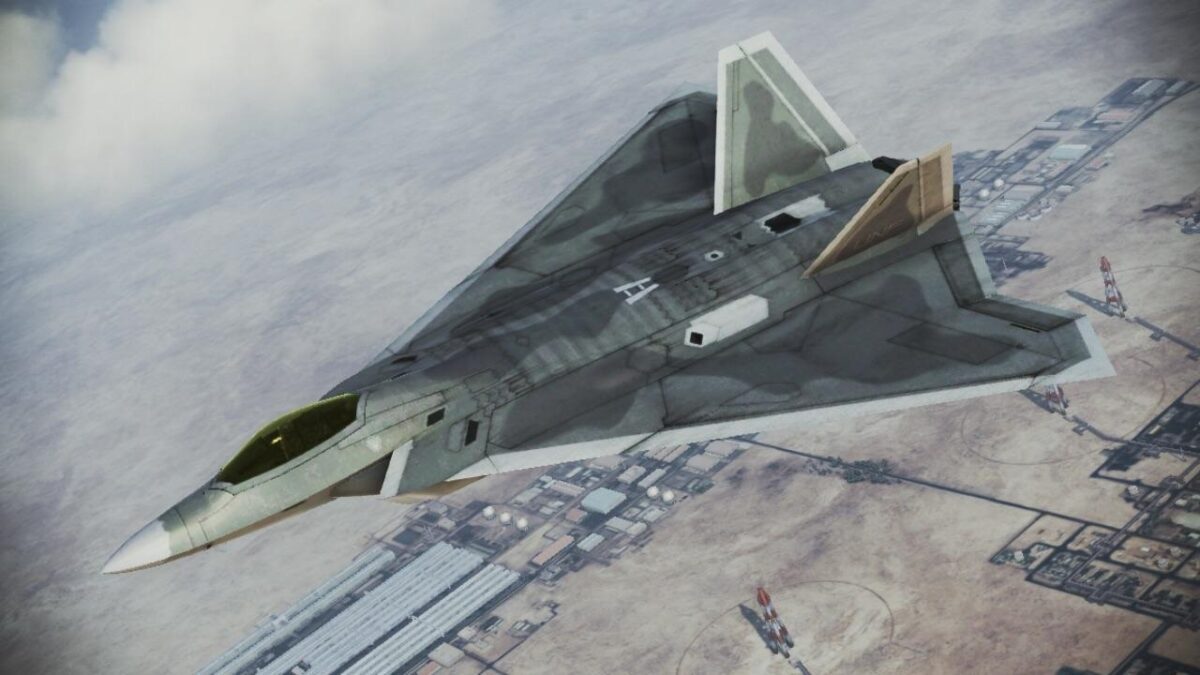
Image: Artist Rendering/Creative Commons. FB-22 Artist rendering, or how the F-22 could have been a bomber.
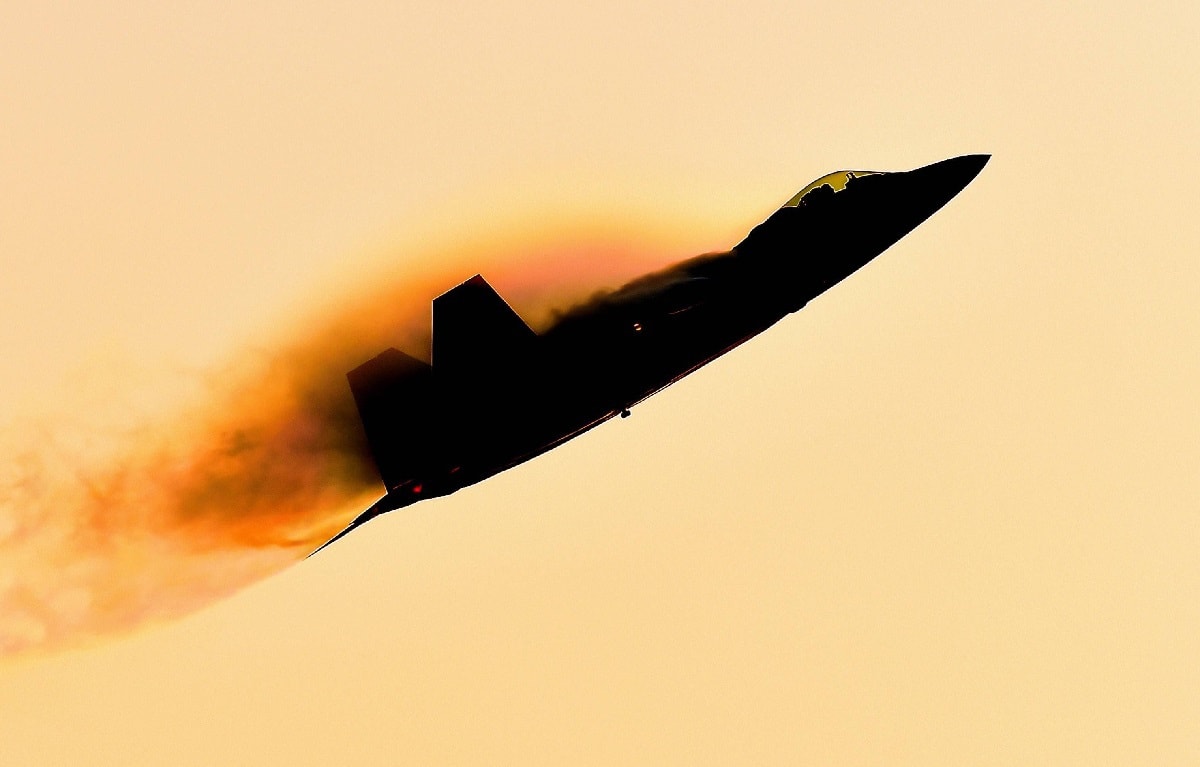
Image: Creative Commons.
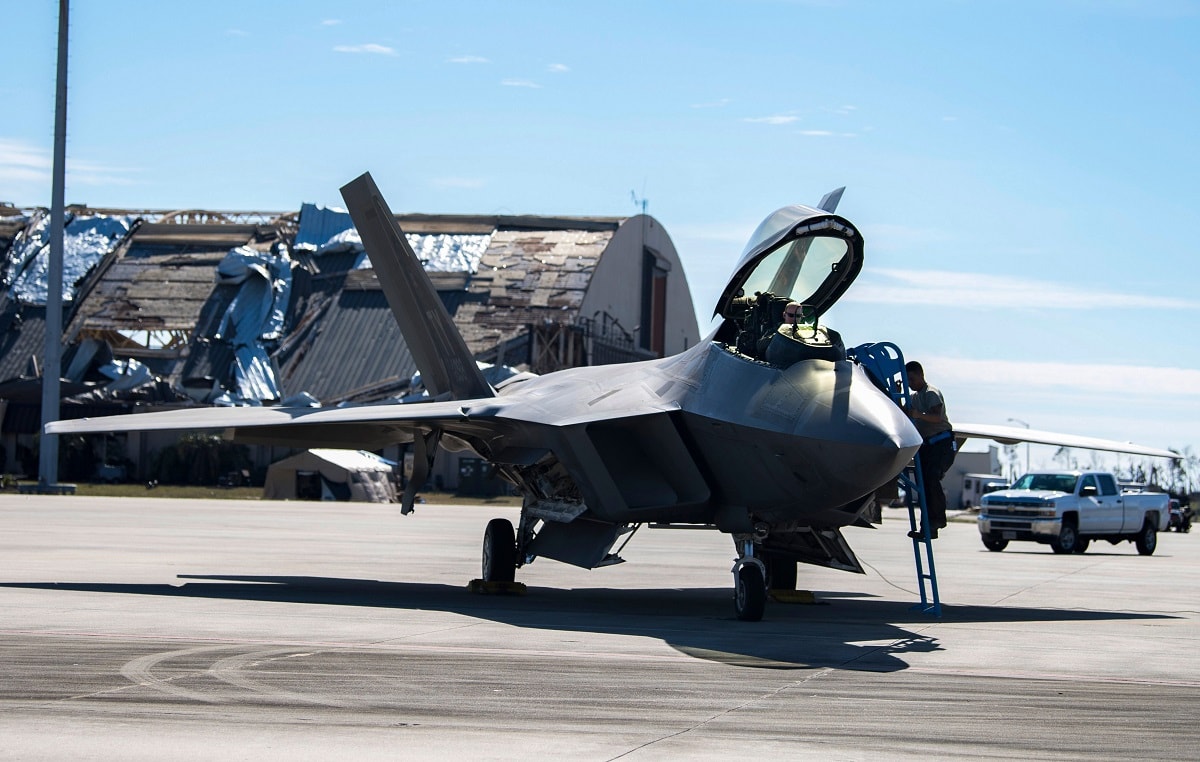
A pilot from the 27th fighter Squadron, Langley, Virginia, prepares to fly an F-22 Raptor fighter aircraft from Tyndall Air Force Base, Florida, following Hurricane Michael, October 24, 2018.
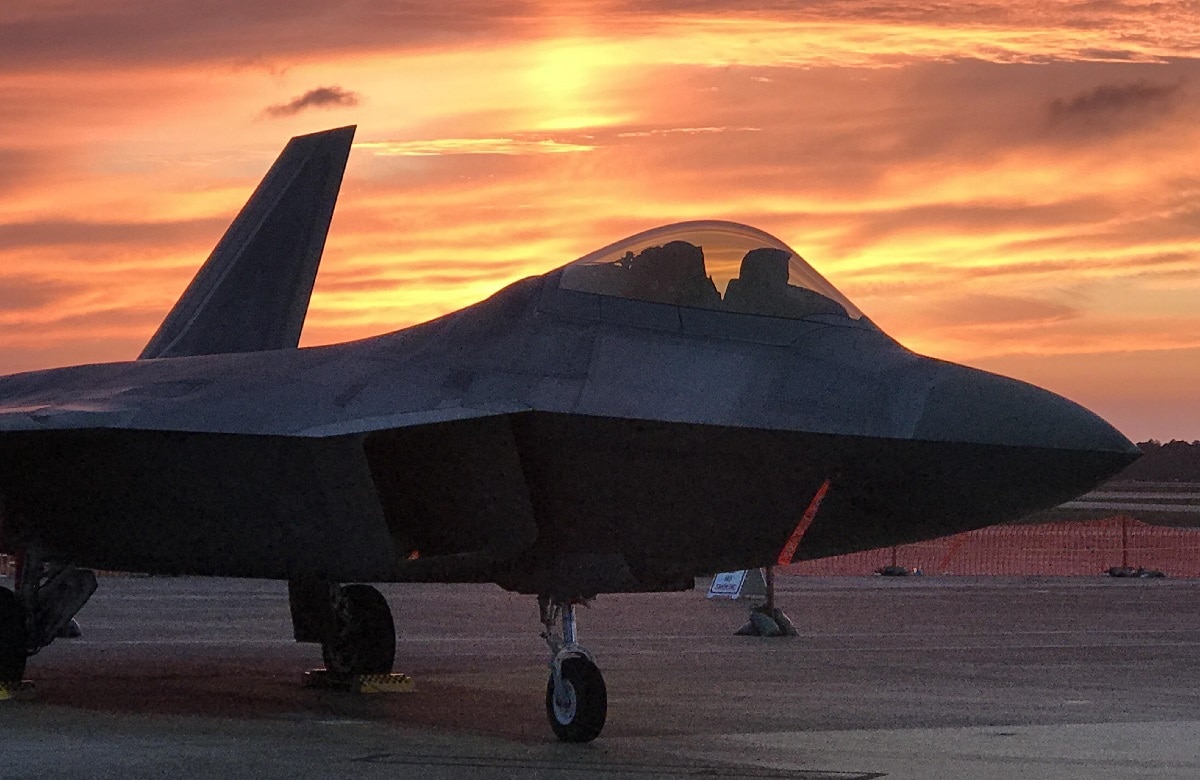
Image: Creative Commons.
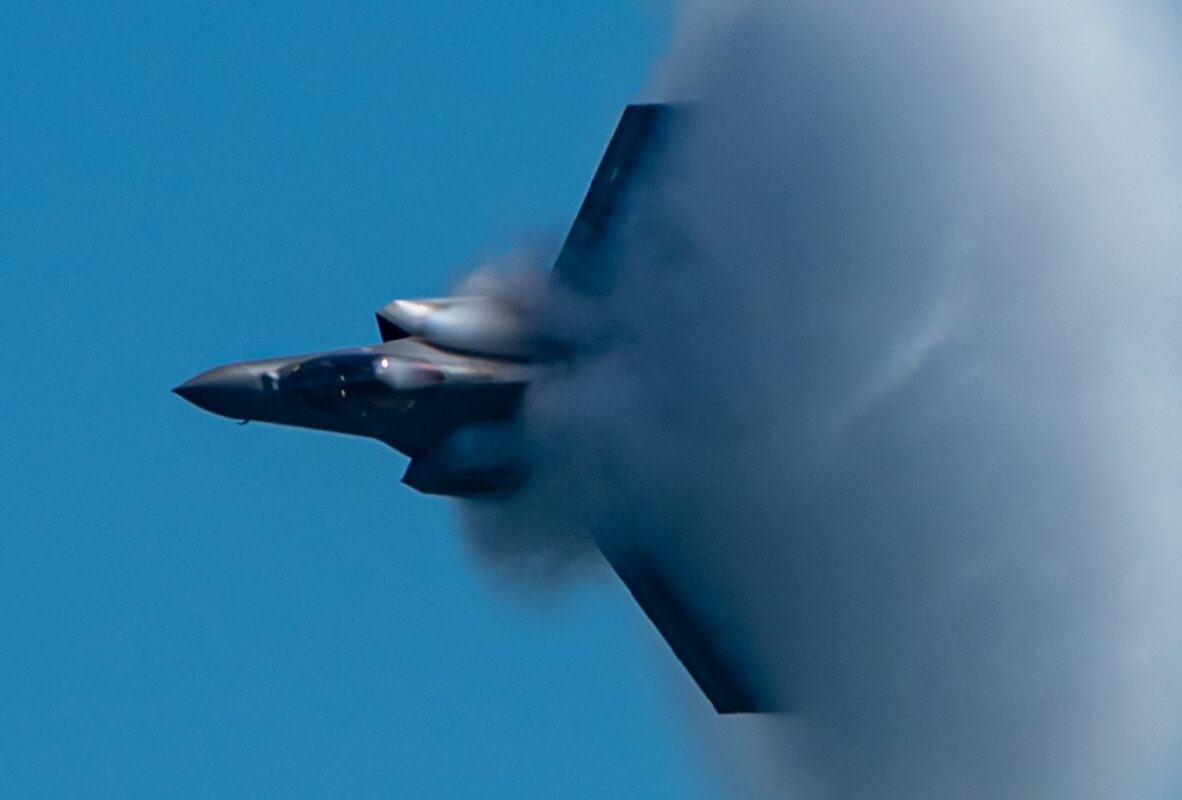
U.S. Air Force Capt. Kristin “Beo” Wolfe, F-35 Demonstration Team pilot, tears through the skies during a rehearsal performance for the 2020 OC Air Show Aug. 14, 2020, Ocean City, Md. The OC airshow featured numerous performers to include the U.S. Air Force Thunderbirds, F-22 Raptor, A-10, and F-35 Demonstration Teams. (U.S. Air Force photo by Capt. Kip Sumner)
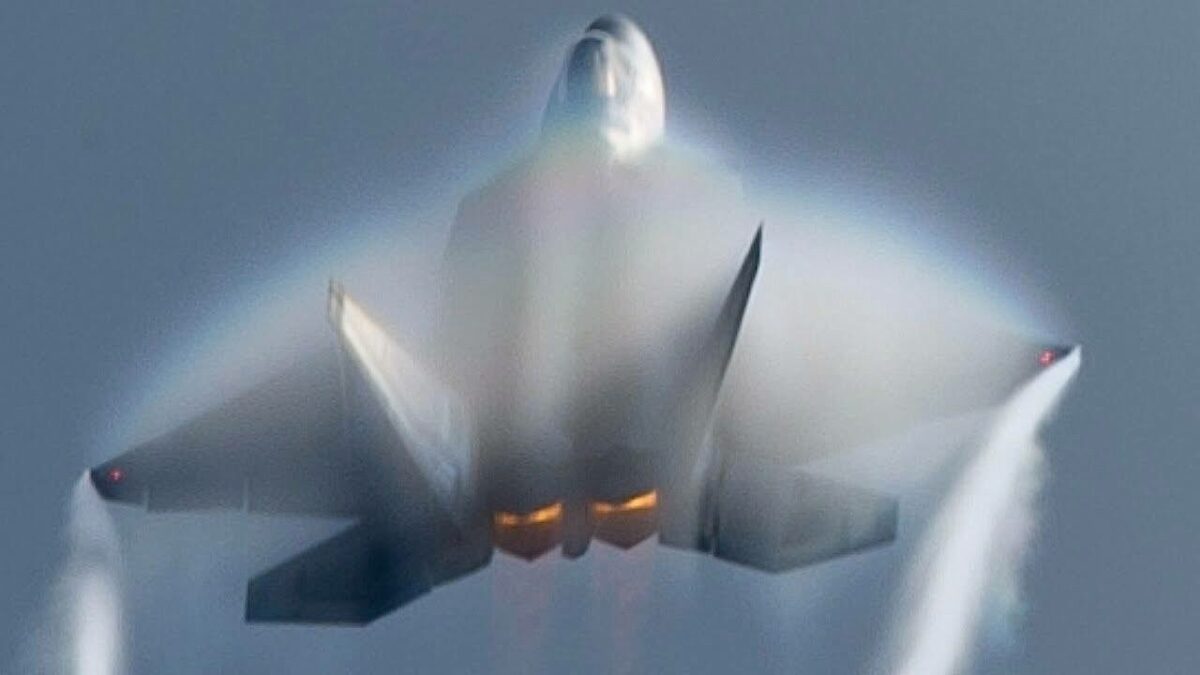
Image: YouTube Screenshot.
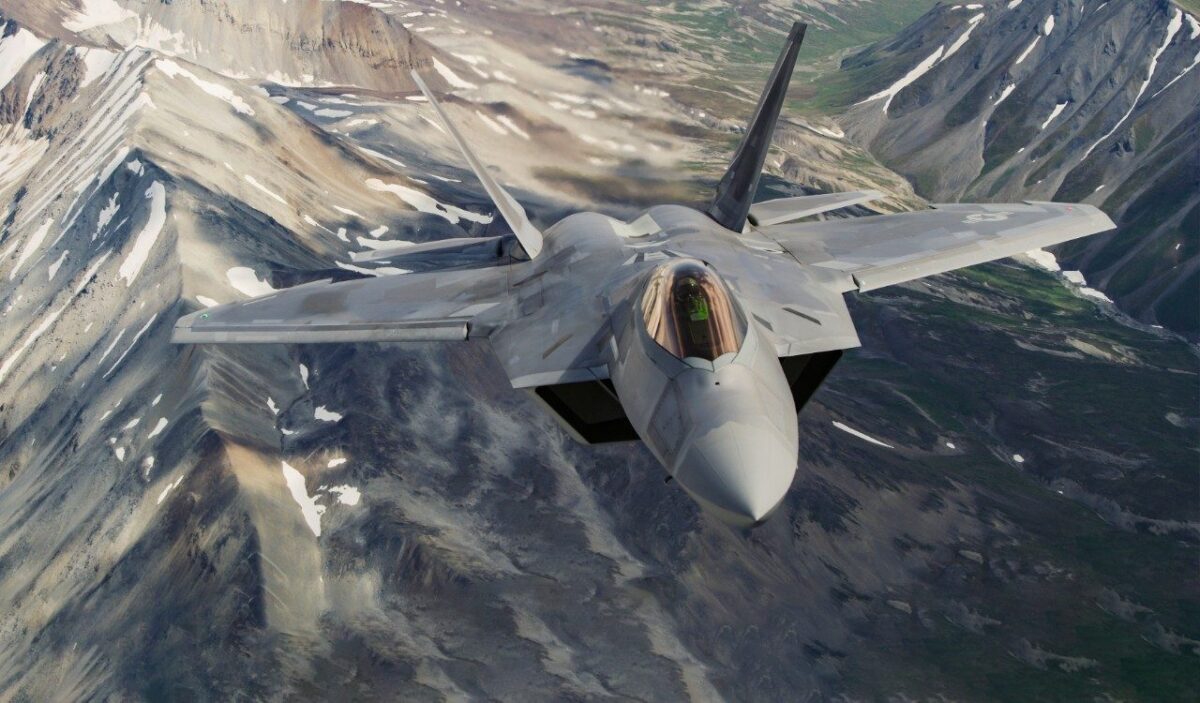
F-22 Raptor. Image: Lockheed Martin.
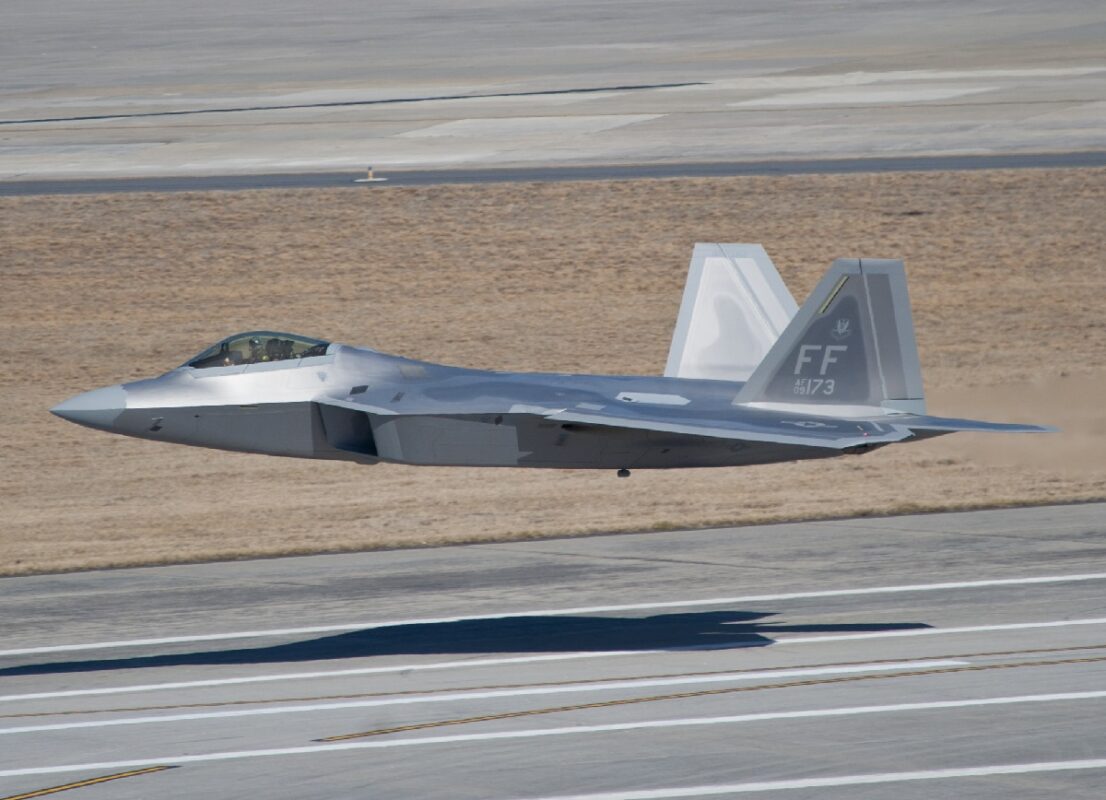
F-22 Raptor 4173 takes off from Lockheed Martin’s Marietta, Ga., facility on its delivery flight to Langley Air Force Base, Va., Jan. 27. 2011.
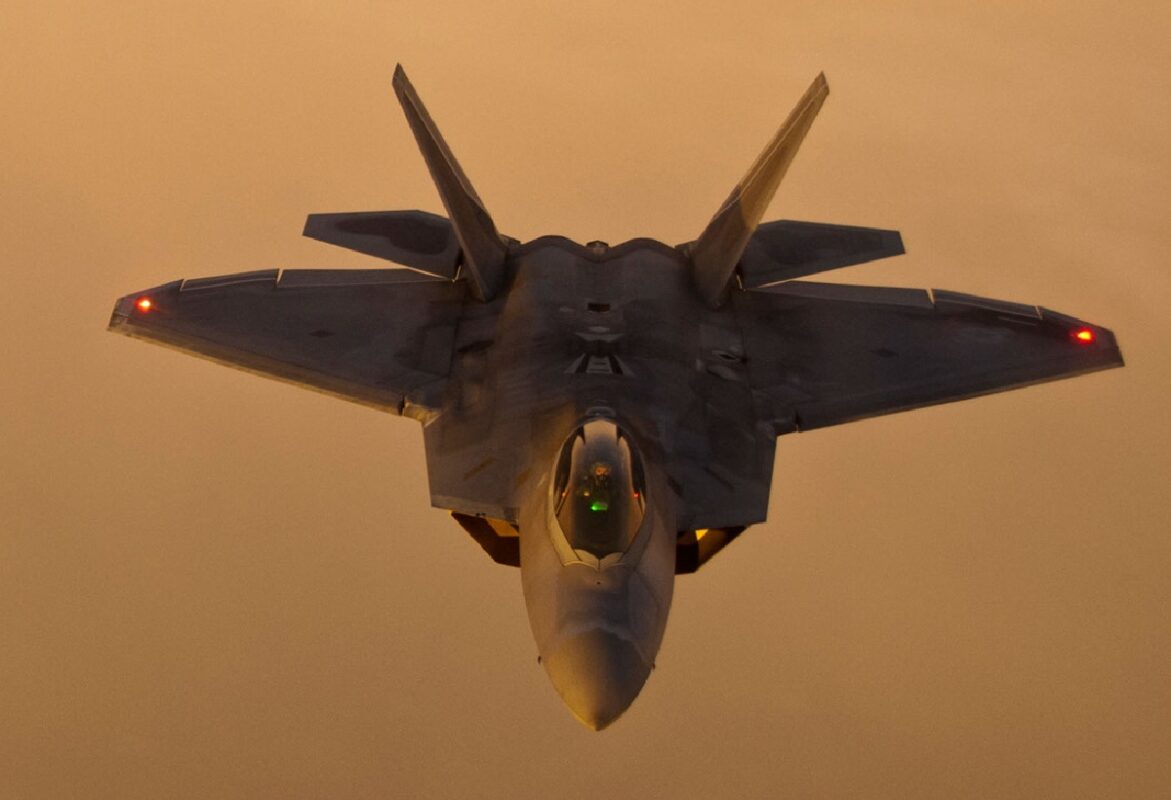
F-22 Raptors from Tyndall Air Force Base, Fla. fly in formation behind a KC-135 Stratotanker from Altus Air Force Base, Okla. after air refueling over New York, Aug. 21, 2012. (U.S. Air Force photo/Airman 1st Class Kenneth W. Norman)
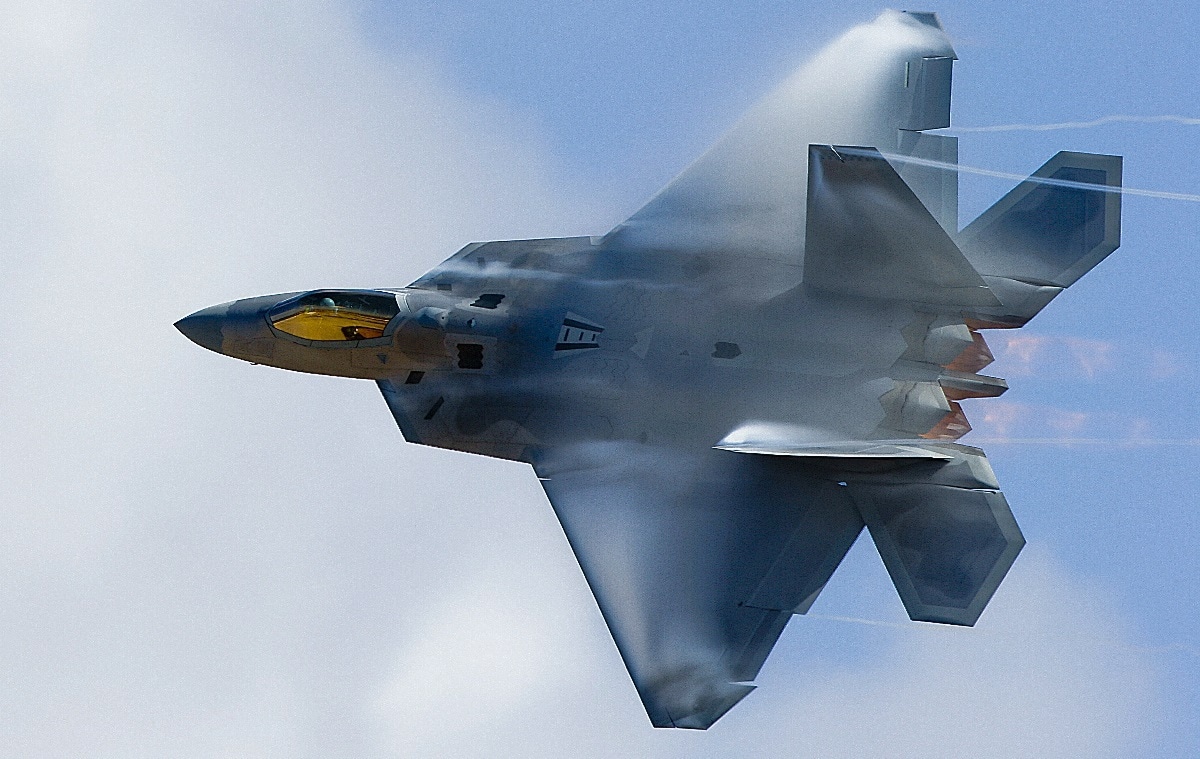
An F-22 Raptor aircraft performs a high-speed bank at the Marine Corps Community Services-sponsored annual air show Oct. 3, 2008, at Marine Corps Air Station Miramar, San Diego. (U.S. Marine Corps photo by Lance Cpl. Dan T. Le/Released)
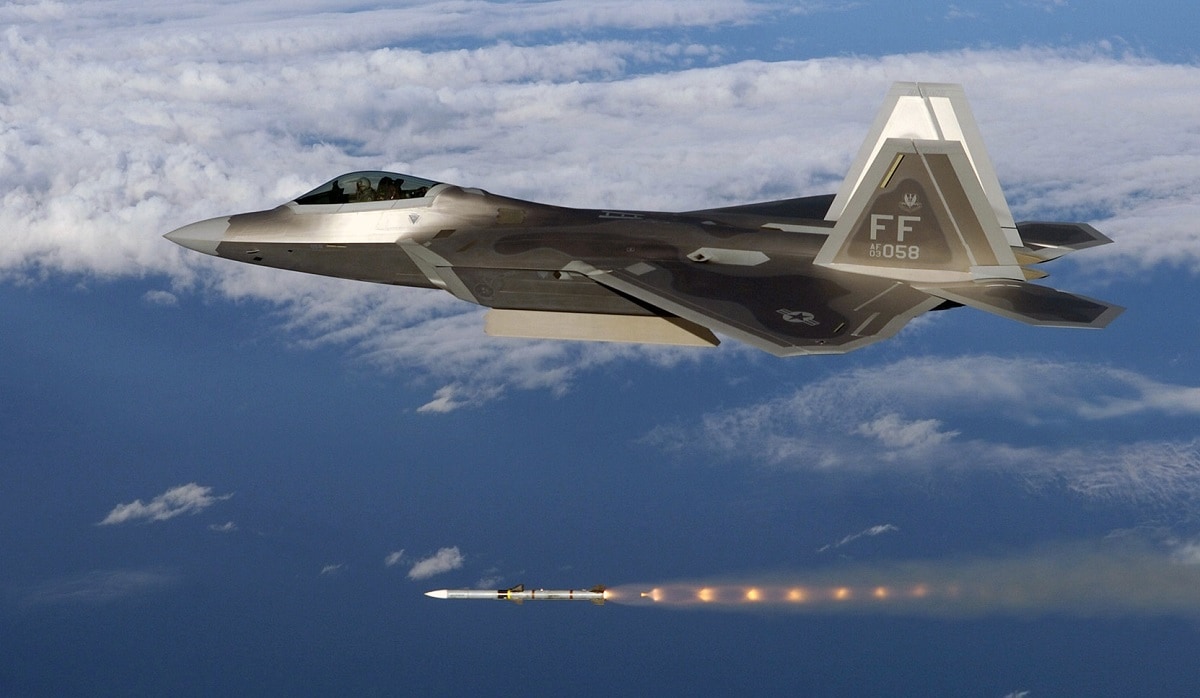
This F-22A Raptor from the 27th Fighter Squadron “Fighting Eagles” located at Langley Air Force Base, Virginia, fires an AIM-120 Advanced Medium Range Air-to-Air Missile (AMRAAM) and an AIM-9M sidewinder heat-seeking air-to-air missile at an BQM-34P “Fire-bee” subscale aerial target drone over the Gulf of Mexico during a Combat Archer mission. The unit was deployed to Tyndall AFB, Florida to support the Air-to-Air Weapons System Evaluation Program hosted by the 83rd Fighter Weapons Squadron also located at Tyndall.
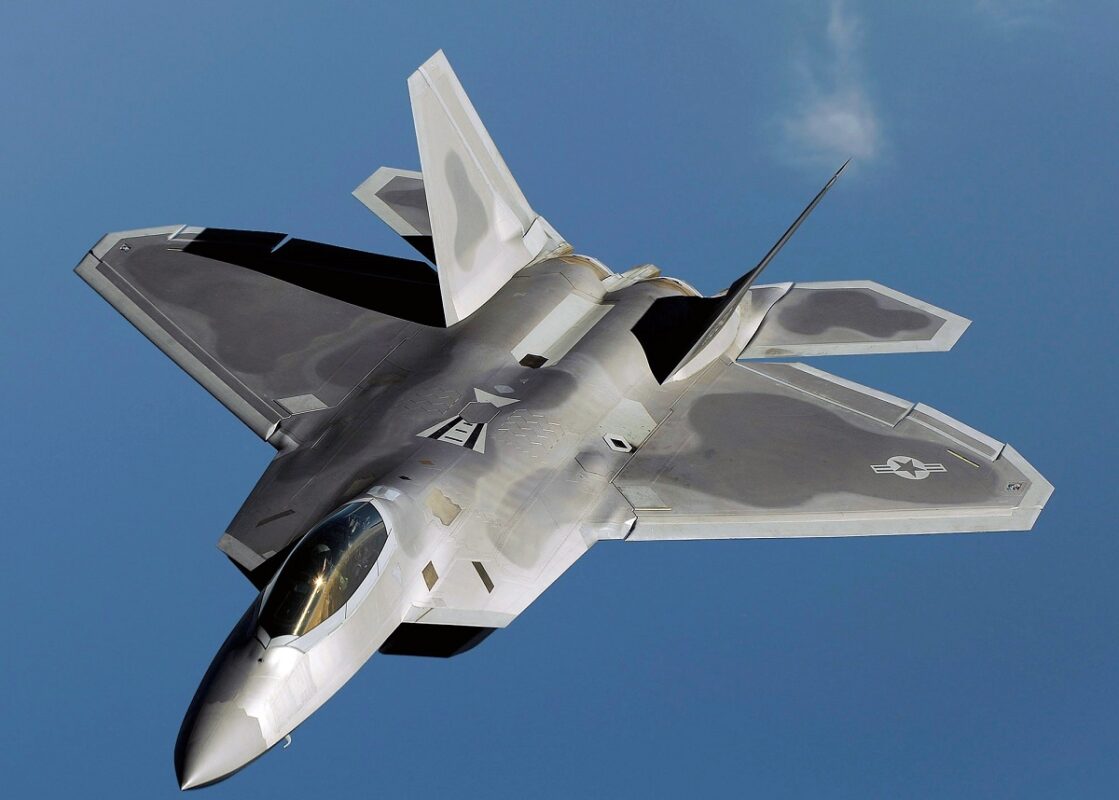
An F-22 Raptor flies over Kadena Air Base, Japan, Jan. 23 on a routine training mission. The F-22 is deployed from the 27th Fighter Squadron at Langley Air Force Base, Va. (U.S. Air Force photo/Master Sgt. Andy Dunaway)
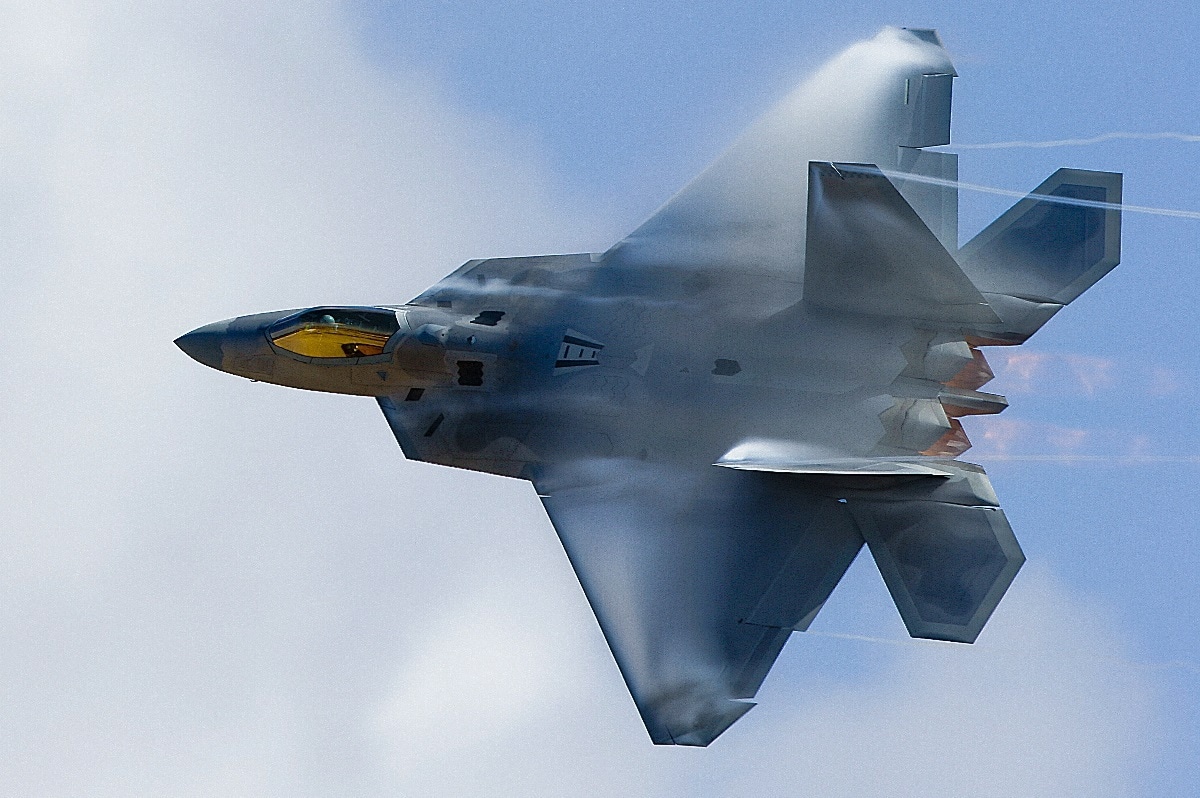
An F-22 Raptor aircraft performs a high-speed bank at the Marine Corps Community Services-sponsored annual air show Oct. 3, 2008, at Marine Corps Air Station Miramar, San Diego. (U.S. Marine Corps photo by Lance Cpl. Dan T. Le/Released)
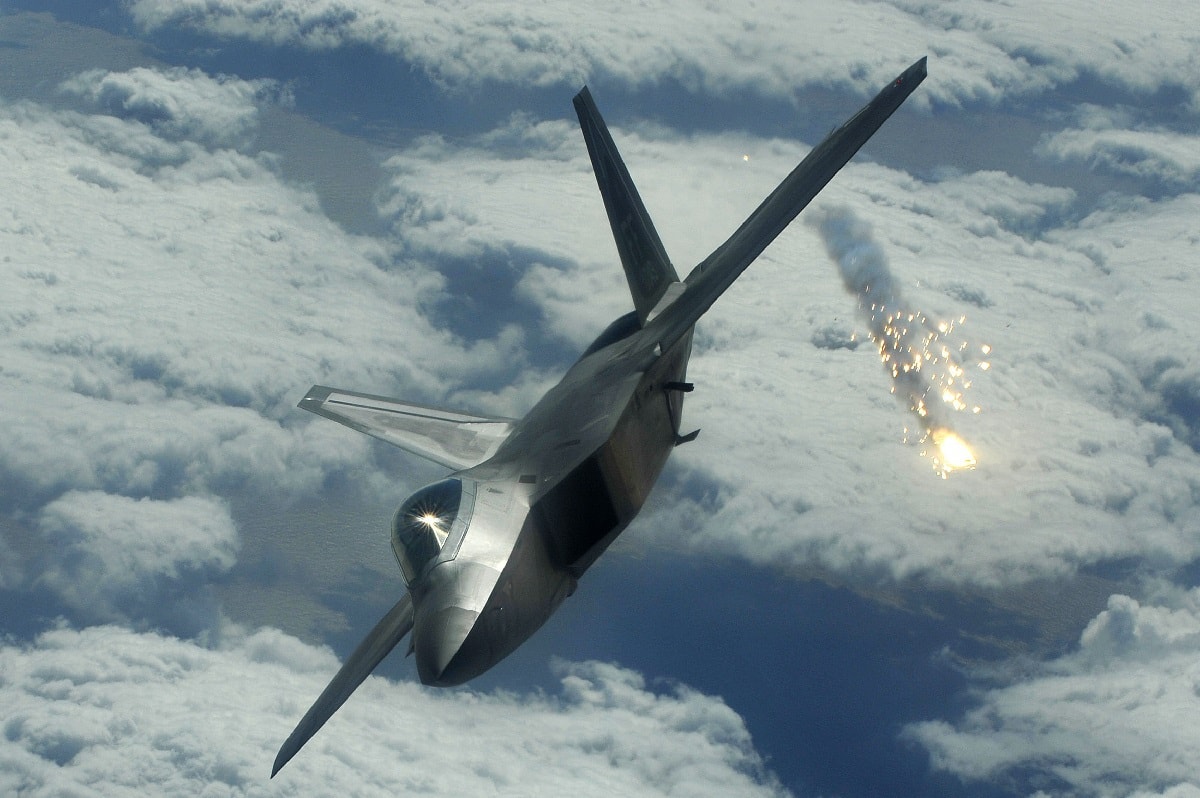
An F-22 Raptor shoots out a flare during an air combat training mission Jan. 15. The F-22 is deployed to Kadena Air Base, Japan, from the 27th Fighter Squadron at Langley Air Force Base, Va., in support of U.S. Pacific Command. (U.S. Air Force photo/Senior Airman Clay Lancaster)
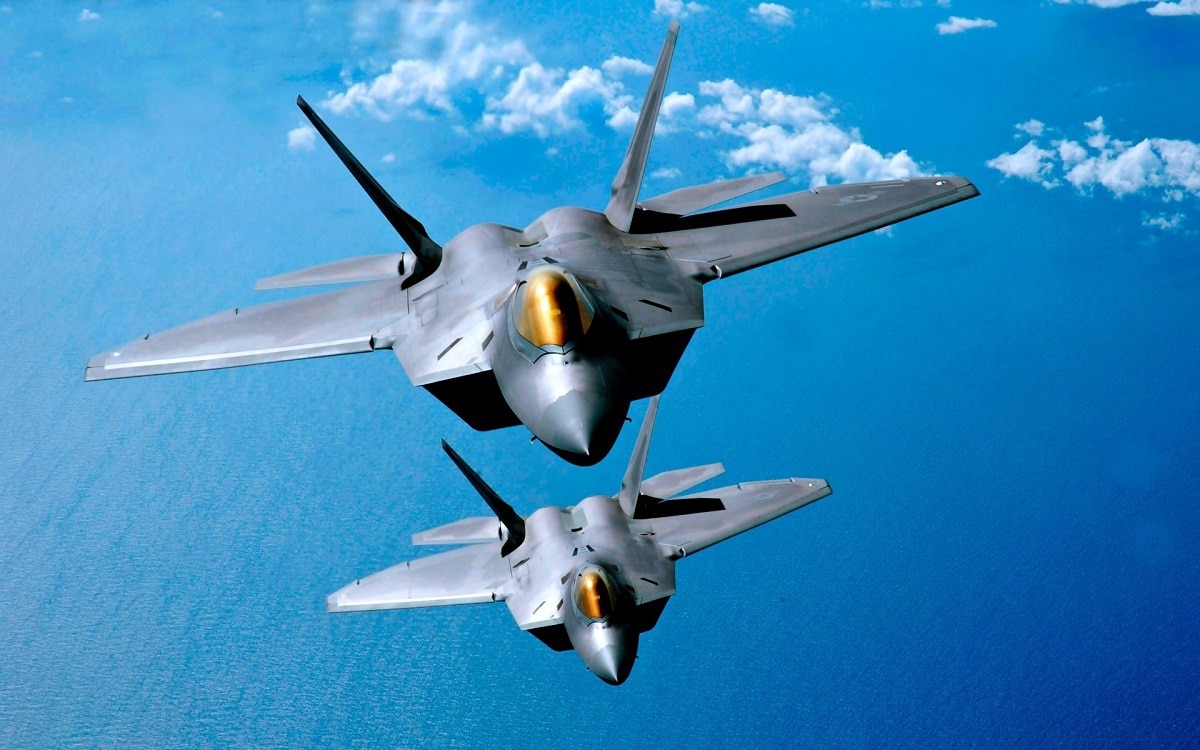
F-22 Raptor. Image: Creative Commons.
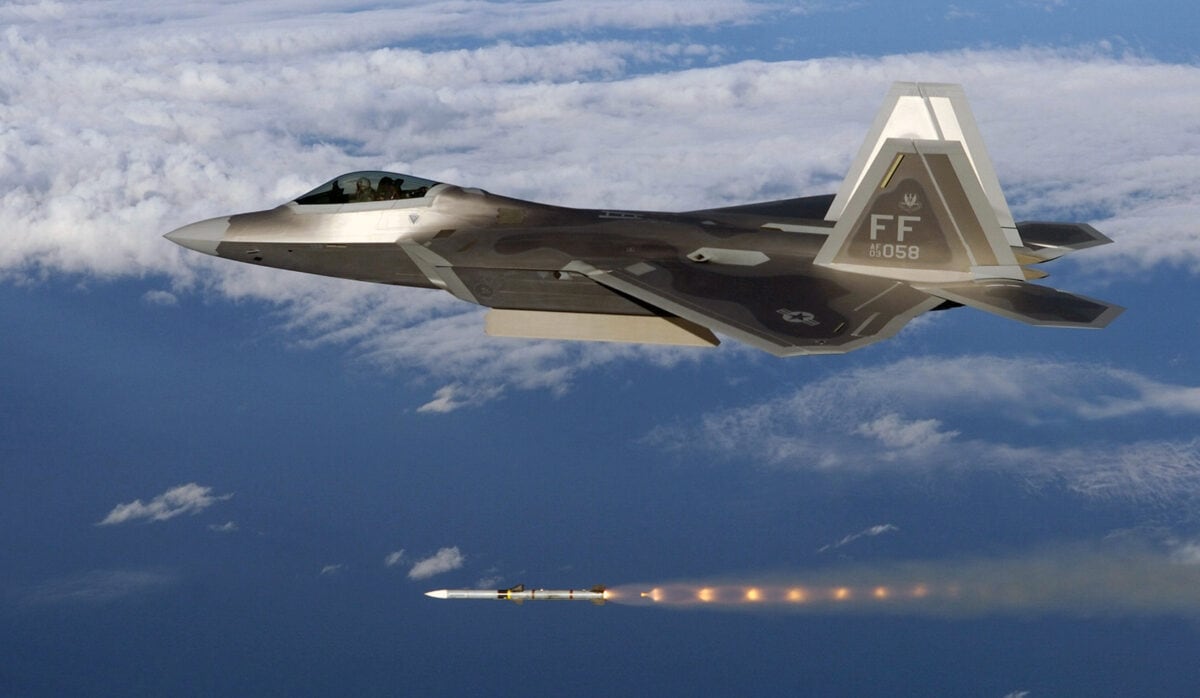
This F-22A Raptor from the 27th Fighter Squadron “Fighting Eagles” located at Langley Air Force Base, Virginia, fires an AIM-120 Advanced Medium Range Air-to-Air Missile (AMRAAM) and an AIM-9M sidewinder heat-seeking air-to-air missile at an BQM-34P “Fire-bee” subscale aerial target drone over the Gulf of Mexico during a Combat Archer mission. The unit was deployed to Tyndall AFB, Florida to support the Air-to-Air Weapons System Evaluation Program hosted by the 83rd Fighter Weapons Squadron also located at Tyndall.
The key to the Chinese claim is that a hypersonic weapon would still need to be fired from a “small distance” and when the aircraft is relatively low to the ground. That would suggest that a high-flying F-22 at range would still have time to maneuver. The goal of the F-22 Raptor, and the newer Lockheed Martin F-35 Lightning, is to evade an enemy’s air defenses and strike targets at distance. If the enemy doesn’t know the aircraft is there, it won’t fire a missile – hypersonic or otherwise.
Finally, today’s fifth-generation aircraft – including the F-22, which was designed as an air superiority fighter – can target an enemy from well-beyond visual range. A hypersonic heat-seeking missile is certainly a threat, but likely not nearly as much as the Chinese researchers would like to suggest.
Now a Senior Editor for 1945, Peter Suciu is a Michigan-based writer who has contributed to more than four dozen magazines, newspapers and websites. He regularly writes about military hardware, and is the author of several books on military headgear including A Gallery of Military Headdress, which is available on Amazon.com. Peter is also a Contributing Writer for Forbes.

